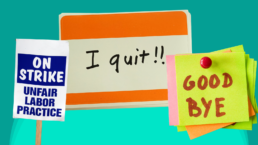By Erika Rodriguez, The Guardian
Despite quizzical think pieces on the motivations behind the Great Resignation, anyone who pays rent or a mortgage knows why this “labor shortage” is under way. After years of inflation and stagnant wages, the pandemic has revealed the value of labor, the worthlessness of commutes and office culture, and the importance of finding personal comfort in times of increasing precarity.
In other words, we are living in what labor economist Lawrence Katz calls “a once-in-a-generation ‘take this job and shove it’ moment” – which gives workers a once-in-a-generation upper hand.

The potential of this cultural moment is not limited to the 2.9% of the workforce who have quit their jobs in the past few months. As CEOs scramble to maintain retention rates, those who have kept their jobs can express solidarity with resigning workers and contribute to the cultural shift by slowing the pace of productivity.
What I am proposing is not exactly a “slowdown”, but a “slow-up”.
Traditionally, a slowdown is a strike tactic in which workers remain on the job but slow productivity with the aim of negotiating for a particular objective, such as higher wages. In this sense, a slowdown is a highly localized and temporary effort.
Recent Posts
‘Unconstitutional. Unethical. Authoritarian.’ ICE Bars Millions Of Immigrants From Bond Hearings
July 18, 2025
Take Action Now One watchdog said the new policy “seems like a blatant attempt to stop them from exercising their right to due process.”……
Americans Are Not Nearly Alarmed Enough About Climate Change
July 18, 2025
Take Action Now Americans still don’t comprehend how imminent, dangerous, and far-reaching the threat is—and journalists are partly to blame.By…
The IRS Is Building A Vast System To Share Millions Of Taxpayers’ Data With ICE
July 17, 2025
Take Action Now ProPublica has obtained the blueprint for the Trump administration’s unprecedented plan to turn over IRS records to Homeland Security…
Israel’s Sudden Assault On Syria Is Unchecked Aggression
July 17, 2025
Take Action Now Jerusalem is bombing Damascus and threatening al-Sharaa’s rule, while Washington was hoping to help the nascent government on…




